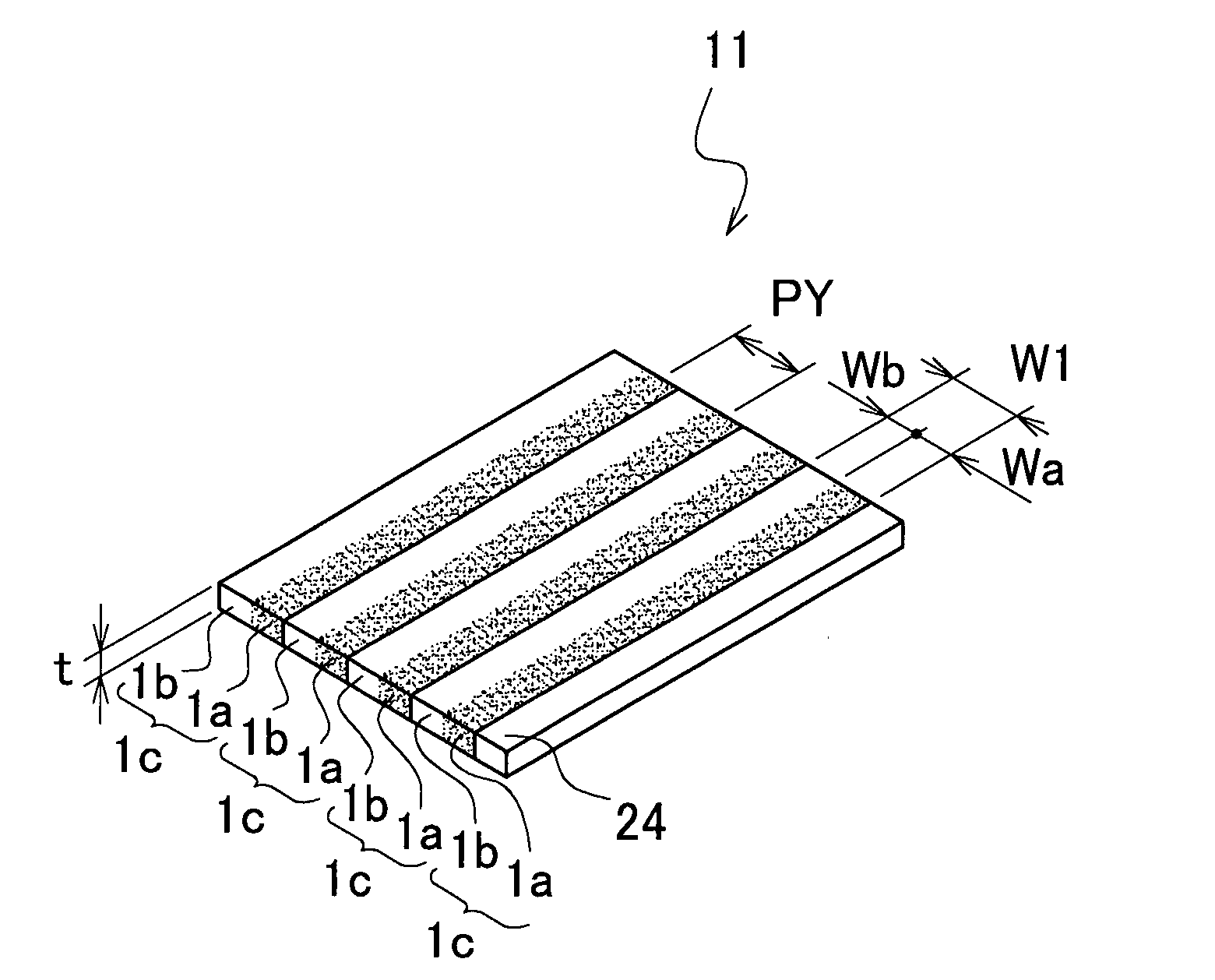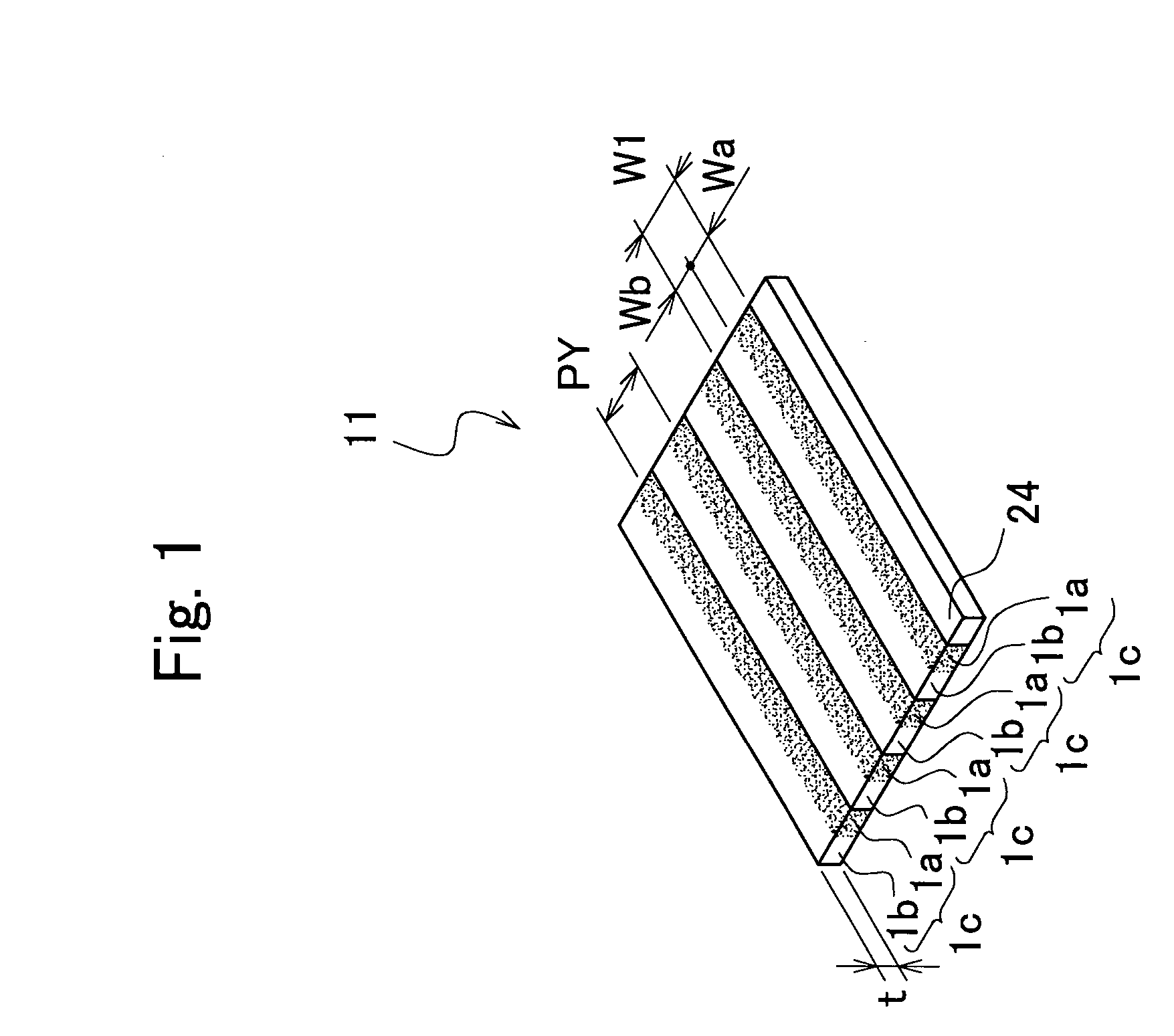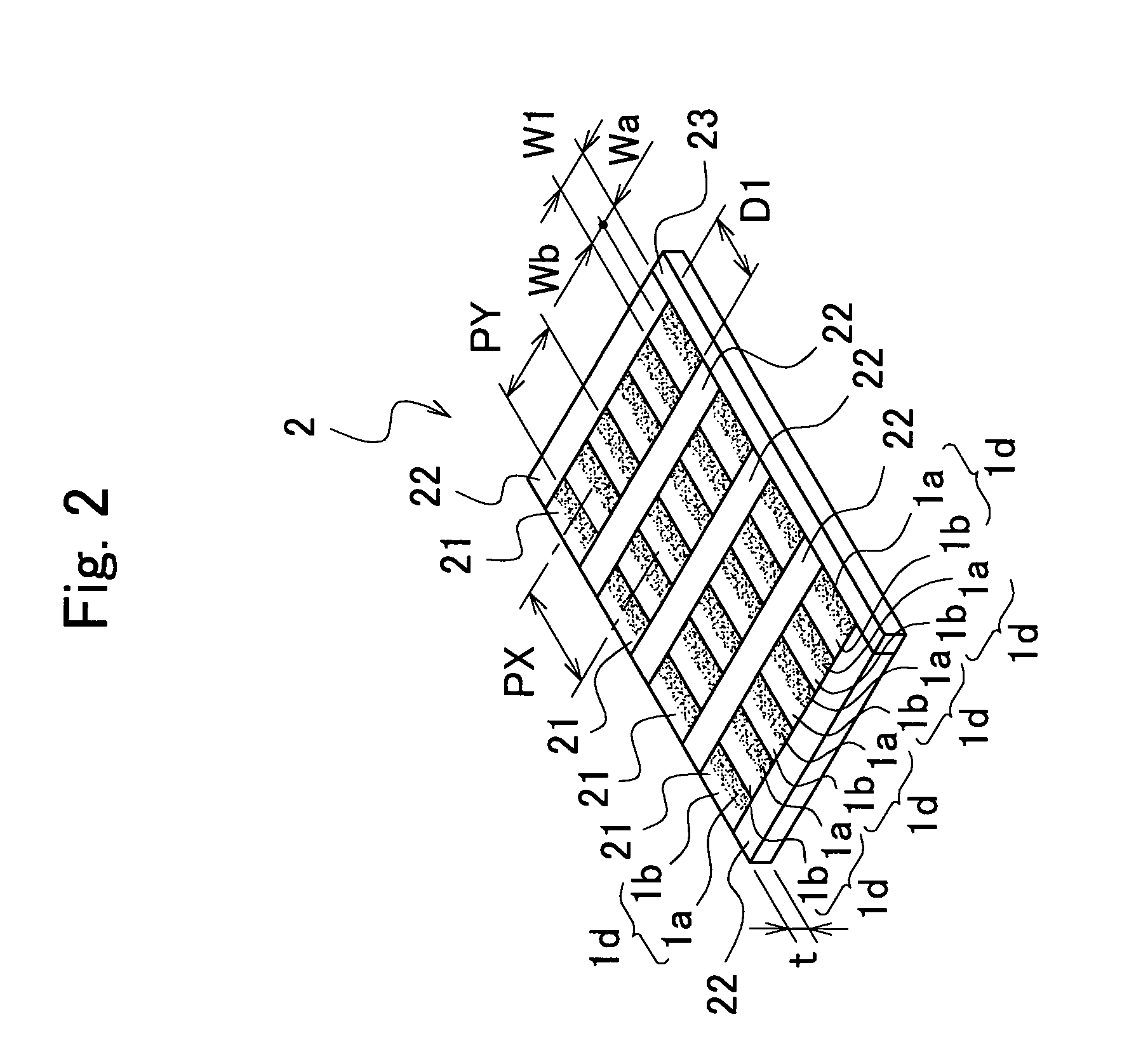Anisotropic conductive sheet and manufacture thereof
a technology of anisotropic conductivity and conductive sheet, which is applied in the manufacture of cables/conductors, dielectric characteristics, and conductors. it can solve the problems of fine metal wire buckles, difficult to maintain the anisotropic conductivity of a fine pitch required by modern high-integrated circuit boards, and difficult to reduce the distance between fine metal wires. achieve the effect of high productivity
- Summary
- Abstract
- Description
- Claims
- Application Information
AI Technical Summary
Benefits of technology
Problems solved by technology
Method used
Image
Examples
first embodiment
[0082] In the first embodiment in FIG. 1, a rectangular sheet member 1c includes a conductive portion 1a and a nonconductive portion integrally together, and forms an anisotropic conductive piece. The conductive portion 1a highly densely contains the conductive particles which are unevenly dispersed in a nonconductive elastomer having fluidity and serving as a matrix, the conductive particles having a specific gravity greater than that of the nonconductive matrix component. The nonconductive portion 1b is forming a substantially nonconductive portion since the conductive particles are unevenly dispersed in the nonconductive elastomer. Here, the conductive particles that are unevenly dispersed means that the conductive particles are unevenly dispersed in a direction of plane of the anisotropic conductive sheet 11 (direction nearly in parallel with the plane).
[0083] In the first form of the embodiment of FIG. 1, the sheet members 1c are arranged in line such that the conductive portio...
second embodiment
[0097] The anisotropic conductive sheet of the present invention uses, as the nonconductive elastomer, a silicone rubber manufactured by Mitsubishi Jushi Co. or a silicone rubber manufactured by Shin-etsu Polymer Co., and the coupling agent is a silane coupling agent manufactured by Shin-etsu Polymer Co.
[0098] Referring to FIG. 2, the anisotropic conductive sheet 2 includes the conductive portions 1a arranged like a matrix. The conductive portions 1a are forming through regions penetrating from the front surface to the back surface of the anisotropic conductive sheet 2. The sheet member 1d is forming the conductive portion 1a by mixing the conductive particles into the nonconductive matrix having fluidity in a manner that the conductive particles are unevenly dispersed by utilizing a difference in the specific gravity. The nonconductive portion 1b, on the other hand, is a separation layer formed by the unevenly dispersed conductive particles. The thus obtained anisotropic conductive...
PUM
 Login to View More
Login to View More Abstract
Description
Claims
Application Information
 Login to View More
Login to View More - R&D
- Intellectual Property
- Life Sciences
- Materials
- Tech Scout
- Unparalleled Data Quality
- Higher Quality Content
- 60% Fewer Hallucinations
Browse by: Latest US Patents, China's latest patents, Technical Efficacy Thesaurus, Application Domain, Technology Topic, Popular Technical Reports.
© 2025 PatSnap. All rights reserved.Legal|Privacy policy|Modern Slavery Act Transparency Statement|Sitemap|About US| Contact US: help@patsnap.com



